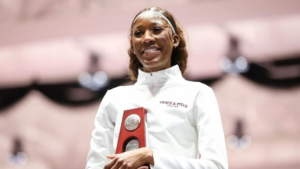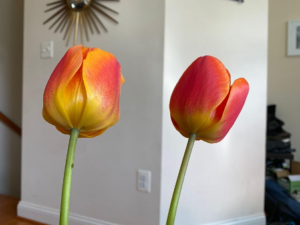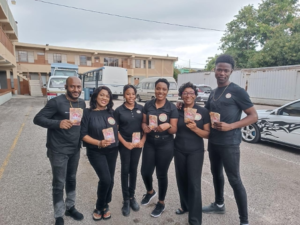Riba Celebrates “100 Women Architects In Practice”
Dr. Patricia E. Green, Jamaican Architect, Is One In 100
In December 2023, the Royal Institute of British Architects (RIBA) published its first ever compilation of “100 Women Architects in Practice” globally.
Dr. Patricia E. Green, a Jamaican, is one of the six Caribbean architects included in this seminal work. Dr. Green shared with the Freedom Come Rain newspaper that she felt “honoured and respected” as she stood to address the audience at the New York City leg of the launch on February 8, 2024. She said, “I was quietly praising God, smiling, and greeting the persons who came over to us as architects to get their books autographed. I felt so humbled and grateful, too, because the RIBA publication is a huge deal.”
As a conservation architect, Dr. Green stated that although she has been involved in countless architectural projects and assignments globally, one of her most treasured undertakings was when she worked as an educator, helping to shape young minds, at the Caribbean School of Architecture at the University of Technology (UTECH), Jamaica. She spent several years at UTECH and also served as head for three academic years, starting 2014/15.
THE EARLY YEARS
A core leader at Go for God Family Church, Dr. Patricia Green is the firstborn of four children for Leonard and Stephanie Green. Raised in Kingston, she attended the Queen’s School and obtained her Ph.D. in architecture in Seville, Spain, in 2012. In her early years, she worked with the Government of Jamaica at the Public Works Department (PWD), where she was assigned to the Agricultural Research Unit, with responsibility for Bodles and Montpelier Agricultural stations. Improvements were being done to houses, roads, and a slaughter house, which were designed by Dr. Green, who remembers “leaving Kingston at 6 a.m., attending five different site meetings, returning to Kingston the same day, writing up reports, and itching all over from cow ticks I had picked up in the bushes while examining pipe lines with different contractors. One day, one of my co-workers said, ‘You are always so exhausted; when you go out of town, why don’t you overnight at a hotel?’ That was when I discovered that was a benefit offered by the job,” she laughed. “I just never knew!”
MEN AND WOMEN CAN BOTH WIN “IN A MAN’S WORLD”

What she did know was that when she was appointed the first female Chief Architect at PWD, there was an issue concerning her receiving a company vehicle, which came with the position. Her male director persistently asked her, “Miss Green, yuh not coming over to tek up yuh post?”
I said, “No, I need to know if I am getting the car.”
She explained, “I eventually stole a car from PWD because the director kept saying that, as a woman, I shouldn’t drive a car. One of the officers was leaving, and he gave me the key to the vehicle he had been assigned, and I just kept driving it. My director would ask me to ‘bring back the key!’ And I would say, ‘No, I am entitled to a car.’ To which he would respond, ‘Yuh know if you going to country, I will give you a driver,’ and I would retort, ‘But all the man dem get car, so what happen to me, I can’t drive car, too?’After a long while, he stopped harassing me,” she chuckled. “So, I was really the first woman in government to drive a government plate car; well…it was a pick-up.”
Continuing, she divulged, “When I returned from London in the eighties, I had an afro and used to wear pants. I was doing that because I was an architect, and being amongst men, you know…Then, one day, I just stopped wearing pants. I began to wear skirts and heels, and I creamed my hair and bought a bright red lipstick. I had been hiding my femininity because I was in a man’s world and felt I had to behave like them to be accepted, but that was not how God had made me. I realised that, as a woman architect, I could be a woman.
“So, I made myself pretty for the office, and I found that I was treated differently. I wasn’t trying to be a man or be like “the boys.” I am a woman, and the most important part of being a woman is being feminine. My relationship with my project team changed when I became feminine and soft. I think that men like when women behave like ladies; we show ourselves to be vulnerable, which we are, and they get to show their protective nature. We both win.
“As the Chief Architect, I had to inspect roofs and approve the works; otherwise, the contractor wouldn’t get paid. So, I would change into boots and climb ladders, did all kinds of things on site. The men would say, ‘Miss Green, you coming on site; you know you must wear pants.’ I would retort, ‘I don’t wear pants anymore!’ So, when I am climbing the ladder, half way up, I would look down, and I see everybody’s head looking on the ground. It was so funny! But the men became very protective of me.”

She and her team of men at PWD became very close. “If I did something that was out of order, one of them would look at me, and I would have to smile sweetly and show my dimples, you know, and apologise if I was out of line. They kept me in line. It was wonderful. We are still good friends to this day.
“I think it is important for a woman to be a woman, to be gracious and graceful. I did not feel dominated. The men respected the professional hierarchy; they honoured and respected that. I had to honour and respect them and their role in the project, too. We kept each other in line. Sometimes contractors would look at the engineer and start talking to him instead of me, and the engineer would retort, ‘Why you talking to me? See the person there, is she in charge, you know. You haffi talk to her!’”
THE RIBA BOOK
The RIBA book features two of Dr Green’s designs which are very significant buildings on Jamaica’s historical landscape: the University Bookshop at the University of the West Indies, Mona, which she did while she was the campus architect, and the Bob Marley Museum.
UWI Bookshop
Dr. Green said that being the conceptualizer for the Bob Marley Museum was very special for her because when she was country-hopping across Europe in the late seventies, everywhere she went, she heard ‘Bob Marley songs’ playing on the roadways, and when strangers realised that she was from ‘Bob Marley country,’ they welcomed her even more.
Bob Marley Museum
“You are the ones who took us through the Liberation Movement,” was what an Angolan man whom she met on the bus in Germany told her, and he took her to his family and feted her for a week.

She promised herself that when she returned to Jamaica, she would visit Bob Marley and personally thank him, but that never materialised because he passed away shortly after. But she never forgot the promise. So stuck was it in her heart that one night she dreamt that Rita Marley wanted her to fix her cupboards. When she told her family about her dream, her brothers laughed and called her “Josephine, the dreamer.”
Sometime later, Dr. Green did meet Rita Marley. She had gone out for ice cream, and there was Mrs. Marley in her car, feeding her baby. After the introductions were exchanged, Mrs. Marley said, “I have a building,” and invited Dr. Green to help. When they went to 56 Hope Road, the place was vacant and locked up, and all the architect said was, “We should make a museum.” And so it was that, with the assistance of Neville Garrick and Eleanor Wint, the building was preserved. All the additions were placed around the building, and the Bob Marley artefacts remained intact.
Dr Pat E. Green is passionate about the architectural preservation of historical buildings and edifices and has spoken against breaches and deliberate disregard for buildings and sites designated protected under the Jamaica National Heritage Trust. As an international consultant with UNESCO on cultural heritage, Dr. Green is an advocate for rights, privileges, and good governance over life and property. It is her belief that good stewardship of the resources of any nation is of the utmost importance.
“Jamaica Rising” showcases how Jamaicans (mainly), and friends of Jamaica (secondarily), have played a part in advancing the welfare of the whole human race, in keeping with the MAP God gave this nation – Motto, Anthem, and Pledge.
It is hoped that by doing this, we will become midwives of destiny, helping to propagate God’s will for this nation, its inhabitants, and the wider humanity.
Do you know a story of a Jamaican pioneer? Email us at [email protected]






